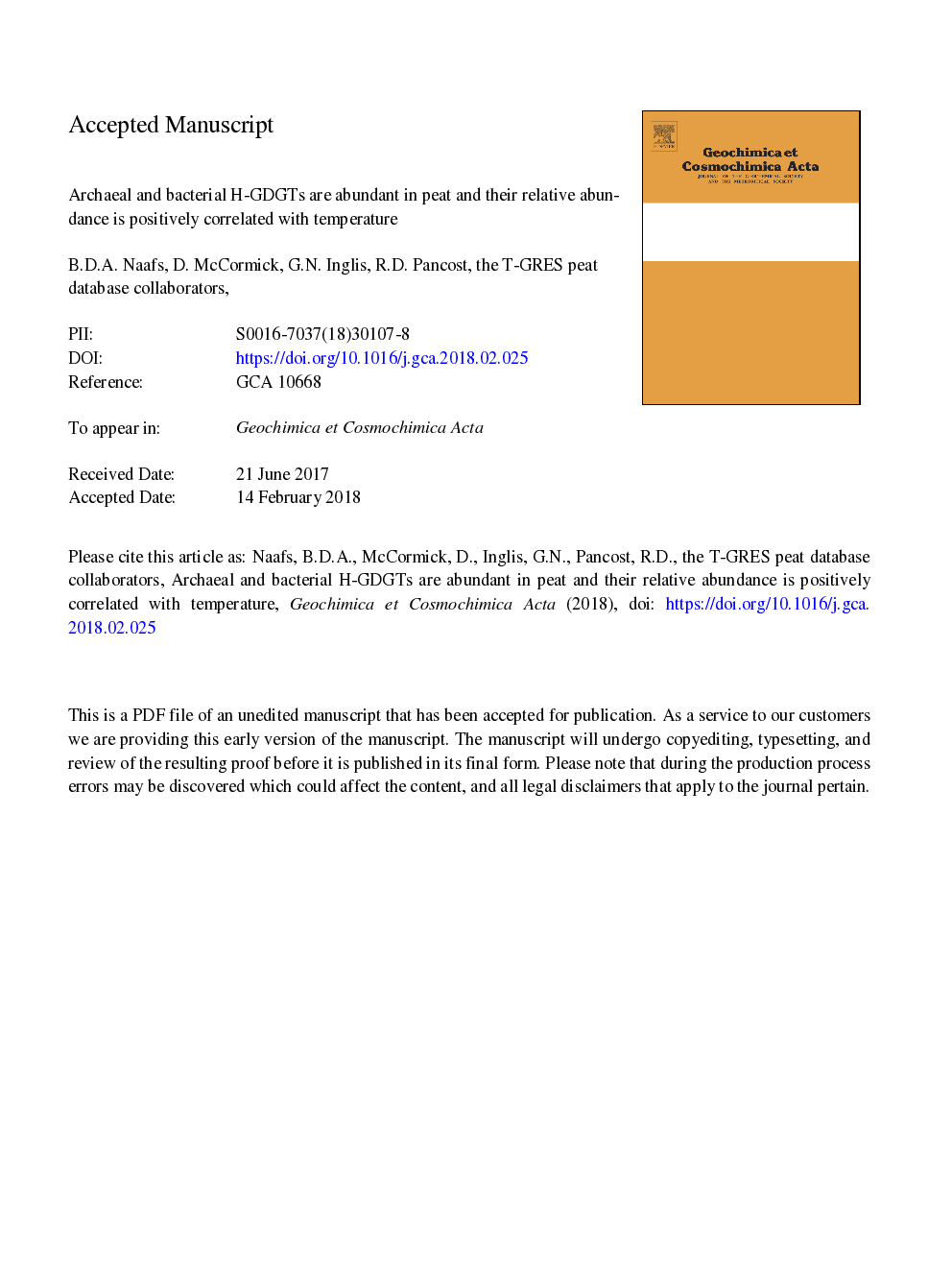| Article ID | Journal | Published Year | Pages | File Type |
|---|---|---|---|---|
| 8910812 | Geochimica et Cosmochimica Acta | 2018 | 37 Pages |
Abstract
Here we report the distribution of H-GDGTs in a global peat database (nâ¯=â¯471) with a broad range in mean annual air temperature (MAAT) and pH. This is the first finding of H-GDGTs in soils (specifically, peat), highlighting that H-GDGTs are widespread in mesophilic settings. In addition, we report the presence of two new H-brGDGTs with one (H-1034) and two (H-1048) additional methyl groups, respectively. Our results suggest that the relative abundance of both bacterial and archaeal H-GDGTs compared to regular GDGTs is related to temperature with the highest relative abundance of H-GDGTs in tropical peats. Although other factors besides temperature likely also play a role, these results do support the hypothesis that H-GDGTs are an adaptation to temperature to maintain membrane stability. The observation that both bacterial and archaeal membrane lipids respond to temperature indicates the same adaption across the lipid divide between these two domains of life, suggesting parallel or convergent evolution (potentially facilitated by lateral gene transfer).
Keywords
Related Topics
Physical Sciences and Engineering
Earth and Planetary Sciences
Geochemistry and Petrology
Authors
B.D.A. Naafs, D. McCormick, G.N. Inglis, R.D. Pancost, the T-GRES peat database collaborators the T-GRES peat database collaborators,
